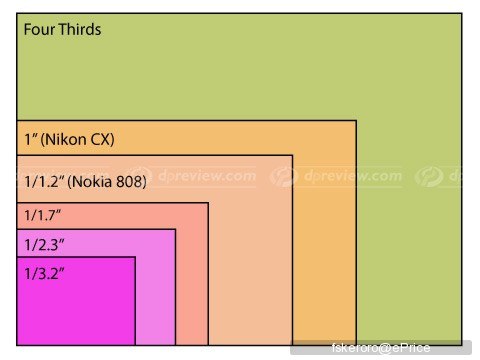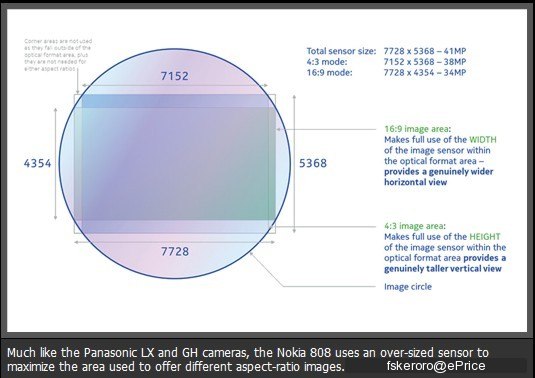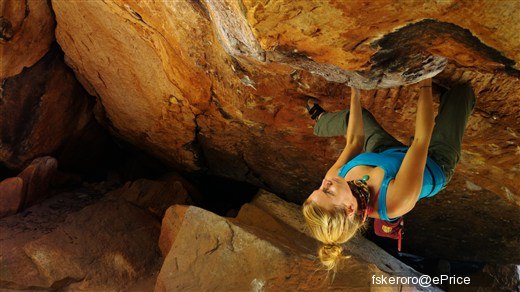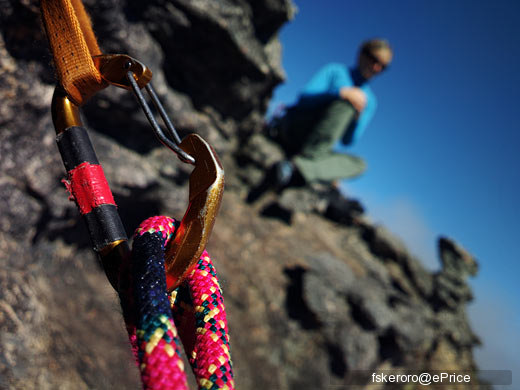【新聞】國際著名的數位相機網站 Dpreview 專文介紹 Nokia 808 PureView !
Dpreview是個非常知名的數位相機介紹與評測的網站
一般來說 他們只介紹真正的數位相機
但沒想到Nokia在前天發佈的Nokia 808 PureView被Dpreview注意到了
而且還因此寫了篇專文作介紹 天啊 這是手機欸!!!
想必一定是Nokia 808 PureView相機非常強悍吧
文中表示808 PureView的1/1.2感光元件 是一般手機表準規格1/3.2的5倍大!!
更是一般數位相機感光元件的3倍大!!
並詳細介紹Nokia 808 PureView的相機規格
有興趣的大家看看吧!!!!
---------------------------------------------------------------------------------
Nokia has made the startling announcement that it has created a 41MP smartphone, the Nokia 808 PureView. Interestingly, in most shooting modes the camera will output 3, 5MP or 8MP stills, rather than offering its full resolution - promising greater quality and offering some clever features. And this isn't a trade-show concept model, this is a product that will be offered to the public, though details of when and in which countries haven't been announced. What's interesting isn't so much the pixel count as how it's used, so we took a closer look.
The first thing to realize is that this isn't a standard 1/3.2" mobile phone sensor, it's an unusual and remarkably large 1/1.2" type (five times larger). In fact, it's almost three times the size of the sensors in most compact cameras. As a result, its photosites are the same size as those in most 8.2MP cameraphone but the 808 doesn't try to create an image of the same quality, 5 times bigger. Instead it oversamples the image and then pixel-bins down to a smaller size (though there is a special 'creative' shooting mode if you want the full resolution - 38MP at 4:3 aspect ratio, 36MP at 16:9).

This pixel-binning means that noise (which occurs randomly) is averaged-out across multiple pixels (around 7-to-1 in the 5MP mode). The high native pixel count also means that it's possible to effectively 'zoom' by cropping into the center of the image and reducing the number of pixels you average together. Consequently the 808 can offer a roughly 2.8x 'zoom,' while maintaining 5MP output, despite having a fixed lens. The image quality will drop (since the noise is no longer being averaged out), but it does mean you get a roughly 28-78mm equivalent zoom, without the need to have moving lens elements, making the process fast and silent. It also means the lens' 15cm minimum focusing distance is maintained.
And, although the benefits of pixel-binning are lost as you magnify-in, because its photosites are the same size as contemporary 8MP phones, the resulting 5MP should offer the same pixel-level quality even at full magnification.
The same process allows 1080p video to be shot with a 4x cropping zoom.

Despite the large sensor and comparatively large f/2.4 aperture, you won't get much control over depth of field (it'll be equivalent to setting an APS-C DSLR's kit lens to 18mm f/5.6). The depth-of-field control is reduced still further when magnified-in, because it doesn't gain the shallower depth of field that longer physical focal lengths usually bring. So, while it's an improvement over most phones, we wouldn't put much faith in the Nokia white paper's talk of bokeh.
The interesting thing for us, though, is not the Panasonic-esque multi-aspect-ratio use of the sensor, nor the astonishing pixel count, it's the idea of using that high pixel count to offer lower noise or non-interpolated digital zooming, while maintaining a constant image size. As Nokia's blog points out:
'5Mpix-6Mpix is more than enough for viewing images on PC, TV, online or smartphones. After all, how often do we print images bigger than even A4? [It] isn’t about shooting pictures the size of billboards! Instead, it’s about creating amazing pictures at normal, manageable sizes.'
And that's something that might be interesting to see in future compact cameras - models that will concentrate on output of a sensible size so that the user can easily get the benefit of them oversampling the scene.
Click here to read Nokia's blog post about the 808 PureView, which includes more detail about the phone's other features.
And click here to read the company's white-paper on the technology underpinning it.
Nokia 808 PureView lens and sensor specifications
Carl Zeiss Optics
Focal length: 8.02mm
35mm equivalent focal length: 26mm, 16:9 | 28mm, 4:3
F-number: f/2.4
Focus range: 15cm – Infinity (throughout the zoom range)
Construction:
• 5 elements, 1 group. All lens surfaces are aspherical
• One high-index, low-dispersion glass mould lens
• Mechanical shutter with neutral density filter
Optical format: 1/1.2”
Total number of pixels: 7728 x 5368
Pixel Size: 1.4um
Nokia's sample images:

ISO 800 - 5.0MP, 4:3

ISO 114 - 5.3MP, 16:9

ISO 58 - 38.4MP, 4:3
原文網址 : www.dpreview.com/news/2012/02/27/Nokia-808-PureView-with-41MP-sensor
一般來說 他們只介紹真正的數位相機
但沒想到Nokia在前天發佈的Nokia 808 PureView被Dpreview注意到了
而且還因此寫了篇專文作介紹 天啊 這是手機欸!!!
想必一定是Nokia 808 PureView相機非常強悍吧
文中表示808 PureView的1/1.2感光元件 是一般手機表準規格1/3.2的5倍大!!
更是一般數位相機感光元件的3倍大!!
並詳細介紹Nokia 808 PureView的相機規格
有興趣的大家看看吧!!!!
---------------------------------------------------------------------------------
Nokia has made the startling announcement that it has created a 41MP smartphone, the Nokia 808 PureView. Interestingly, in most shooting modes the camera will output 3, 5MP or 8MP stills, rather than offering its full resolution - promising greater quality and offering some clever features. And this isn't a trade-show concept model, this is a product that will be offered to the public, though details of when and in which countries haven't been announced. What's interesting isn't so much the pixel count as how it's used, so we took a closer look.
The first thing to realize is that this isn't a standard 1/3.2" mobile phone sensor, it's an unusual and remarkably large 1/1.2" type (five times larger). In fact, it's almost three times the size of the sensors in most compact cameras. As a result, its photosites are the same size as those in most 8.2MP cameraphone but the 808 doesn't try to create an image of the same quality, 5 times bigger. Instead it oversamples the image and then pixel-bins down to a smaller size (though there is a special 'creative' shooting mode if you want the full resolution - 38MP at 4:3 aspect ratio, 36MP at 16:9).

This pixel-binning means that noise (which occurs randomly) is averaged-out across multiple pixels (around 7-to-1 in the 5MP mode). The high native pixel count also means that it's possible to effectively 'zoom' by cropping into the center of the image and reducing the number of pixels you average together. Consequently the 808 can offer a roughly 2.8x 'zoom,' while maintaining 5MP output, despite having a fixed lens. The image quality will drop (since the noise is no longer being averaged out), but it does mean you get a roughly 28-78mm equivalent zoom, without the need to have moving lens elements, making the process fast and silent. It also means the lens' 15cm minimum focusing distance is maintained.
And, although the benefits of pixel-binning are lost as you magnify-in, because its photosites are the same size as contemporary 8MP phones, the resulting 5MP should offer the same pixel-level quality even at full magnification.
The same process allows 1080p video to be shot with a 4x cropping zoom.

Despite the large sensor and comparatively large f/2.4 aperture, you won't get much control over depth of field (it'll be equivalent to setting an APS-C DSLR's kit lens to 18mm f/5.6). The depth-of-field control is reduced still further when magnified-in, because it doesn't gain the shallower depth of field that longer physical focal lengths usually bring. So, while it's an improvement over most phones, we wouldn't put much faith in the Nokia white paper's talk of bokeh.
The interesting thing for us, though, is not the Panasonic-esque multi-aspect-ratio use of the sensor, nor the astonishing pixel count, it's the idea of using that high pixel count to offer lower noise or non-interpolated digital zooming, while maintaining a constant image size. As Nokia's blog points out:
'5Mpix-6Mpix is more than enough for viewing images on PC, TV, online or smartphones. After all, how often do we print images bigger than even A4? [It] isn’t about shooting pictures the size of billboards! Instead, it’s about creating amazing pictures at normal, manageable sizes.'
And that's something that might be interesting to see in future compact cameras - models that will concentrate on output of a sensible size so that the user can easily get the benefit of them oversampling the scene.
Click here to read Nokia's blog post about the 808 PureView, which includes more detail about the phone's other features.
And click here to read the company's white-paper on the technology underpinning it.
Nokia 808 PureView lens and sensor specifications
Carl Zeiss Optics
Focal length: 8.02mm
35mm equivalent focal length: 26mm, 16:9 | 28mm, 4:3
F-number: f/2.4
Focus range: 15cm – Infinity (throughout the zoom range)
Construction:
• 5 elements, 1 group. All lens surfaces are aspherical
• One high-index, low-dispersion glass mould lens
• Mechanical shutter with neutral density filter
Optical format: 1/1.2”
Total number of pixels: 7728 x 5368
Pixel Size: 1.4um
Nokia's sample images:

ISO 800 - 5.0MP, 4:3

ISO 114 - 5.3MP, 16:9

ISO 58 - 38.4MP, 4:3
原文網址 : www.dpreview.com/news/2012/02/27/Nokia-808-PureView-with-41MP-sensor
廣告

網友評論 0 回覆本文